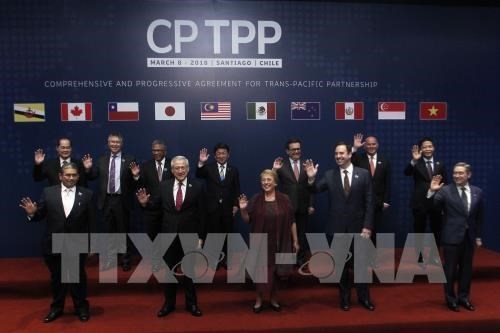According a news release of the Canadian Government, the agreement will create new opportunities to attract job-creating investment to Canada and expand export opportunities to dynamic and fast-growing markets in the Asia-Pacific region.
    |
 |
|
Representatives from CPTPP member countries posed for a group photo following the signing ceremony in Santiago, Chile on March 8, 2018 |
The CPTPP will create more jobs for the middle-class and people working hard to join it. The new CPTPP provides access to almost 500 million more consumers for the world-class products and services Canadian workers and their families have to offer.
Up to 99 percent of Canada’s current exports to CPTPP markets will enter tariff-free. By opening new markets to Canadian goods and services, the CPTPP will benefit Canadians from coast to coast to coast, across a variety of sectors, from farmers to factory workers, start-ups and small businesses, creating more jobs and providing lower prices for consumers.
CPTPP is a free trade agreement between Canada and ten countries in Asia-Pacific, comprising Australia, Brunei, Chile, Japan, Malaysia, Mexico, New Zealand, Peru and Vietnam.
The deal came into force in Canada, Australia, Japan, Mexico, New Zealand and Singapore on December 30, 2018, and in Vietnam on January 14, 2019.
It is expected to promote trade ties between Vietnam and Canada. With Canada’s fast tariff reduction roadmap (from 17 – 18 percent to zero percent in three years), some Vietnamese items are forecast to witness strong export growth as from 2019 like textile-garment, footwear, handbags, plastics and wood products.
Canadian businesses are interested in Vietnam’s opening of its market for foreign agricultural products such as pork, beef, chicken, aquatic products and fresh fruits.
Trade between Vietnam and Canada in 2018 is estimated at 6.36 billion CAD (4.6 billion USD), up 4.2 percent from the previous year, with the Southeast Asian nation recording a surplus of some 4.34 billion CAD.
Source: VNA